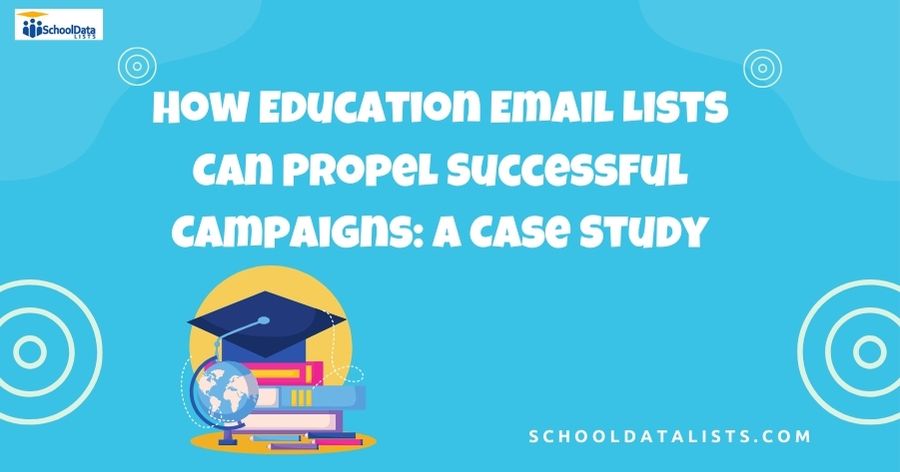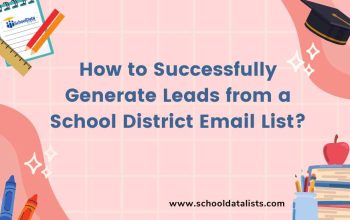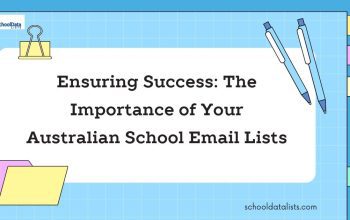In the ever-evolving landscape of digital marketing, leveraging education mailing lists can be a game-changer for campaigns targeting educators. These lists, meticulously curated and segmented, provide a direct line to a niche audience, opening the door for personalized communication and engagement. This blog post delves into how education email lists have been instrumental in driving successful campaigns, highlighting strategies and best practices through various case studies.
Subject Line Success: Strategies for Maximizing Open Rates
Crafting an irresistible subject line is essential to ensure your email doesn’t get lost in a busy educator’s inbox. Effective subject lines for education email lists should directly speak to the recipient’s interests or current challenges in the educational landscape. Experimentation with different styles, such as posing a question that sparks curiosity or offering a sneak peek of the content inside, has proven to increase open rates. Incorporating urgency or exclusivity can also make your email stand out. For example, “Unlock Exclusive Teaching Strategies Available Today Only!” creates a sense of immediacy. Additionally, the use of emojis has been observed to catch the eye amidst a sea of text, though they should be used judiciously to maintain professionalism. Testing various approaches and continuously analyzing the results helps in honing the art of subject line creation, ultimately making your emails too compelling to ignore.
Crafting Compelling Content for Educational Audiences
Engaging the interest of educators through your email content is pivotal for the success of your campaign. This means providing information and resources that not only inform but also inspire action among teachers and educational professionals. Highlighting innovative teaching methods, introducing fresh classroom resources, or sharing insights for personal and professional development are key themes that resonate. Structuring your email with clarity is crucial—employ headings, subheadings, and bullet lists to facilitate quick reading. Incorporate real-life testimonials or success stories to lend authenticity and bolster the credibility of your message. It’s about offering content that is not just read, but also applied, sparking change or improvement in educational settings. Remember, the goal is to make every piece of content you send feel like it’s tailor-made for the educator receiving it, addressing their daily challenges and aiding in their continual growth.
Timing and Frequency: Finding the Sweet Spot
Determining the ideal moment and rhythm for dispatching emails to teacher email lists is pivotal. Through careful analysis, it’s been discovered that the timing of your emails can dramatically influence their effectiveness. Sending communications in the middle of the week, especially on Tuesdays and Thursdays, tends to yield the highest engagement, aligning with educators’ routines and their times of peak online activity. As for frequency, striking the right balance is key to keeping your audience engaged without overloading them. Sending emails on a monthly or bi-monthly basis is generally preferred, as it maintains a steady flow of communication without causing recipient fatigue. This approach respects the busy schedules of educators, ensuring that each email sent is a welcome addition to their inbox rather than an unwelcome intrusion. It’s through this strategic scheduling that campaigns can achieve optimal visibility and interaction, keeping educators informed and engaged with the content that matters most to them.
Leveraging Analytics to Refine Email Strategies
Harnessing the power of analytics is crucial for fine-tuning your approach to email campaigns aimed at educators. By closely monitoring key performance indicators such as open rates, click-through rates, and conversion rates, you gain invaluable insights into recipient behavior and preferences. This data allows for the strategic tweaking of email components, enabling you to determine which aspects resonate most with your audience. Engaging in A/B testing of different email elements—including variations in subject lines, body content, and calls-to-action—provides a clear picture of what drives engagement and encourages action. This methodical evaluation and adjustment, informed by real-time feedback, are essential steps in evolving your campaigns. By continuously analyzing these metrics and applying the lessons learned, you can significantly enhance the effectiveness of your outreach efforts, ensuring that each email you send is more impactful than the last. This process of constant improvement, guided by analytics, is a cornerstone of developing highly successful email marketing strategies for educational audiences.
Personalization: Beyond First Names
Delving deeper than merely greeting recipients by their first name, true personalization within teacher email databases involves a nuanced understanding of the audience. By segmenting these databases with precision—categorizing educators based on specific criteria such as the grade levels they teach, their subject matter expertise, or even their school’s location—you can tailor your communications to align closely with their unique interests and needs. This approach allows for the delivery of content and offers that feel bespoke to each recipient, significantly boosting engagement and response rates. Implementing advanced personalization tactics, like dynamic content that adjusts according to the educator’s profile or previous interactions with your content, further elevates the relevance of your campaigns. This strategy not only acknowledges the diverse landscape of educational professionals but also ensures that your messages are perceived as valuable and timely resources, tailored to address the distinct challenges and aspirations of each segment within your teacher email list.
Improving Click-Through Rates with Strong Calls-to-Action
Crafting effective calls-to-action (CTAs) is paramount in translating email engagement into measurable outcomes. The key lies in clarity and the promise of value; each CTA must succinctly convey what educators stand to gain by taking the next step. An effective strategy is to position CTAs as solutions to common challenges faced by educators, such as “Gain Instant Access to Innovative Teaching Strategies” or “Join Our Community of Forward-Thinking Educators.” This approach not only appeals to their desire for professional development but also positions your offering as an essential tool in their educational arsenal. Experimentation plays a crucial role here. By testing various CTA formats and placements within your emails, you can identify which configurations yield the highest click-through rates. Additionally, ensuring that your CTAs stand out visually, through the use of contrasting colors or button designs, can significantly enhance their visibility and effectiveness. It’s this combination of strategic positioning, value proposition, and visual prominence that makes CTAs a critical component in driving action and achieving campaign goals.
Engaging Your Audience with Visuals
Visuals play a crucial role in elevating the appeal and effectiveness of emails sent to the education industry email list. By integrating engaging imagery, informative infographics, and dynamic videos, marketers can capture the attention of educators more compellingly. For instance, visual representations of innovative teaching techniques or graphical summaries of educational research findings can quickly convey complex information in an accessible format. Videos that showcase real classroom scenarios or testimonials from fellow educators add a layer of authenticity and relatability that pure text cannot achieve. When incorporating visuals into your emails, it’s essential to ensure they are responsive and display correctly across different devices, particularly smartphones, as many educators access their emails on the go. Additionally, including alt text for images enhances accessibility, ensuring that all recipients, regardless of how they interact with your email, can fully engage with the content. Thoughtfully selected and well-placed visuals not only make your emails stand out but also reinforce the message, making it more likely that educators will connect with your content and take the desired action.
Conclusion
Utilizing education email lists effectively unlocks the potential to deeply engage educators and advance the reach of various educational initiatives. The insights from case studies shared throughout this post underscore the significance of tailoring every aspect of your email campaign to meet the unique preferences and needs of this specific audience. From the initial crafting of subject lines that capture attention to the meticulous segmentation for personalized content delivery, each strategy is vital for fostering impactful connections. The judicious application of analytics and A/B testing further refine these approaches, ensuring that each campaign not only reaches its intended recipients but also resonates with them on a meaningful level. Moreover, the creative inclusion of visuals and strong CTAs enhances the overall effectiveness, driving both engagement and desired actions. In sum, when education industry email list are leveraged with a strategic, audience-centric approach, they serve as a potent tool for cultivating fruitful relationships within the education sector, ultimately contributing to the success of educational marketing campaigns.




